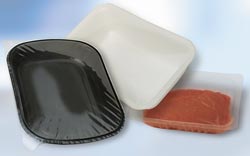Packaging issues

Food packagings and nanos.
The European regulations supervise the authorization of the use of substances in materials in contact with food. In the actual regulatory system ((EU) regulation n°1935/2004), all materials in contact with foodstuffs must respect the principle of inertia. These materials shall not lease their components in sufficient quantity to:
- constitute health hazards to the consumer,
- induce changes in food composition,
- train a degradation of their organoleptic quality.
For plastics used as packaging materials, the regulation described above is completed by the (EU) regulation n°10/2011. The toxicity and the level of migration are studied for each plastic compound, studies carried out by AESA.
What are the real profits of these developments? Could nanoparticles migrate to food?
What become these packagings on all the life cycle?


